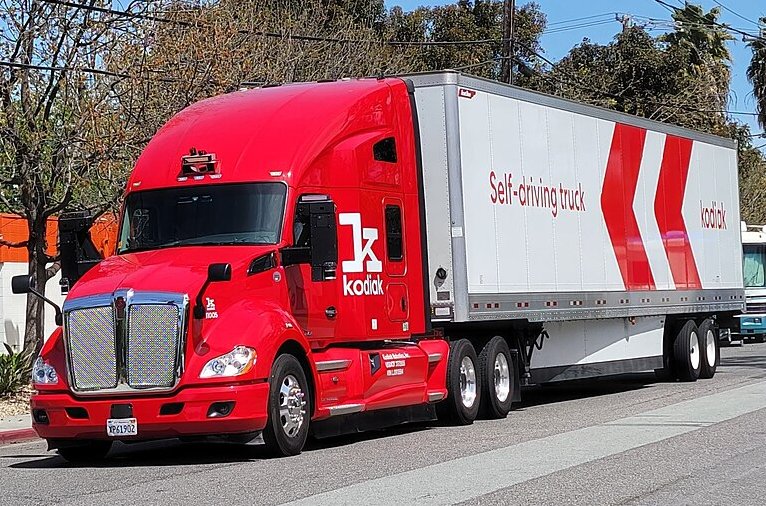One of the favorite shibboleths of the world’s tech overlords is “Move fast and break things.” It seems that one of the things that is now breaking is the dream of driverless cars. The Guardian has a piece out that says that after the billions spent on trying to bring so-called autonomous vehicles to public roadways, the industry behind them is retreating rapidly. (I say so-called because it turns out that many of the vehicles have remote drivers making regular adjustments to each vehicle’s movements because the software doesn’t work properly.)
I have written previously that such vehicles will only work on closed courses where all vehicles are operating as part of a single system and where the possible actions of all those vehicles are known in advance so that there are no surprises—at least from other vehicles.
It would have been very difficult to predict the incident that has sent General Motors’ entry into the autonomous vehicle race, Cruise, into a death spiral. A pedestrian in San Francisco was hit by a car driven by a human driver and then bounced in front of an autonomous taxi operated by Cruise. Instead of stopping, the taxi drove over the person since, by one analysis, the taxi’s code tells it to pull off to the right when it encounters an unfamiliar situation. Believe it or not, the poor pedestrian survived and will likely be collecting a very hefty settlement from GM. The state of California suspended permission for Cruise to operate its taxi service—but this came just three months after the state allowed expanded operations by Cruise.
And this was just one of a series of problems that continue to befall the robotaxi industry: “The cars have driven into firefighting scenes, caused construction delays, impeded ambulances and even meandered into an active crime scene.”
What I am about to say may be hard to believe. But I think that one of the reasons the tech overlords who have been pushing autonomous vehicles so hard failed is that they do not read enough novels. First, tragic novels teach you humility. Second, if you read novels by great writers, you appreciate just how hard it is to describe and evoke the world we live in. Third, the great software composers of the autonomous vehicle world have an additional handicap. They are unable to use the full range of language because they are talking to a machine and must use the very impoverished language called code to describe the world and translate it into actions that a machine can take.
Finally, language itself is imprecise by its very nature, no matter what language or code one is using. The short version is that language is not experience and experience is what humans have. As I wrote previously:
Not all information can be rendered into words. And, even if we could do that, words are a surprisingly imprecise way to convey meaning, freighted as they are with nuance, cultural context, history and so many other interlocking dependencies for their meaning.
I remember around the year 2000 when hydrogen fuel cell cars were being touted as the future. The stock prices of fuel cell companies working on automotive applications soared. But more than 20 years later we are waiting for that wave of fuel cell cars.
Fuel cells actually work though they may never find widespread application in cars. Autonomous vehicles, however, face a conceptual problem that can’t be overcome. The same problem afflicts what is euphemistically called artificial intelligence.
[I]n order to reproduce human intelligence and action, we would need to reproduce the body and its access to all interactions with the social and physical environment. Even if we were intelligent enough to perform this monumental feat, there is no way for us to get outside the system in which we live to observe all the aspects we want to reproduce. And, of course, our actions and those of countless other beings, plants and physical processes keep altering the system we seek to reproduce.
I should point out a purely economic reason why the doomed robotaxi idea was never going to be adopted by ride hailing services such as Uber which touted robotaxis as the next step for company—until the project was quietly dropped. Uber relies on the economic illiteracy of its independent contractor drivers who believe that they are making profit when their income exceeds what they pay for gasoline.
But, of course, these drivers aren’t counting the wear and tear on their automobiles which will have to be serviced and eventually replaced sooner because of the extra miles they are now putting on them. Uber benefits from this illiteracy. If the company had to buy, maintain and operate its own fleet of taxis even without drivers, Uber would chew up even more investor capital than it already has. Of course, the company finally figured this out. (To understand more about how Uber has devoured $33 billion in capital over 14 years, read this.)
I wrote previously: “If we reduce all of our efforts at addressing our problems to language a machine can understand, we will get machine solutions.” The poor pedestrian who was run over by a robotaxi experienced first-hand one of those machine solutions. Unless legislators and policymakers understand correctly what is happening, we will soon see autonomous trucks on highways traveling at much higher speeds and with much heavier cargoes. Last time I checked, force still equals mass times acceleration. Look for some spectacular results if autonomous semis start prowling the nation’s highways.






